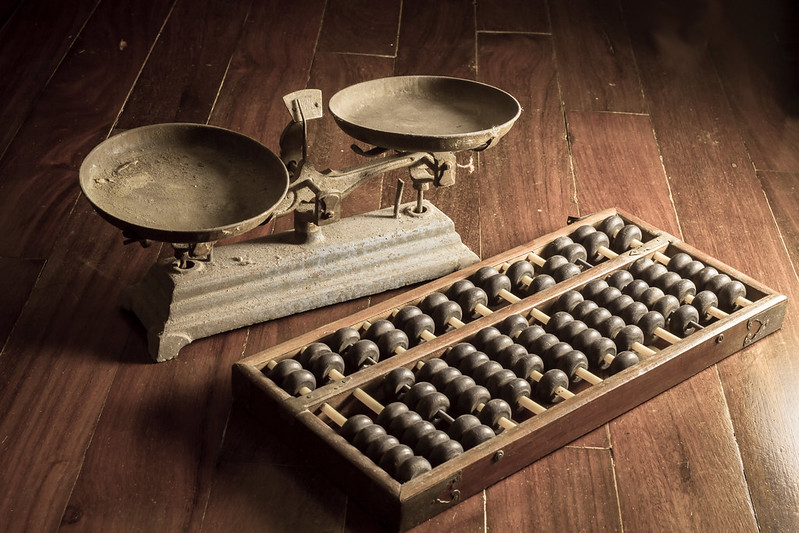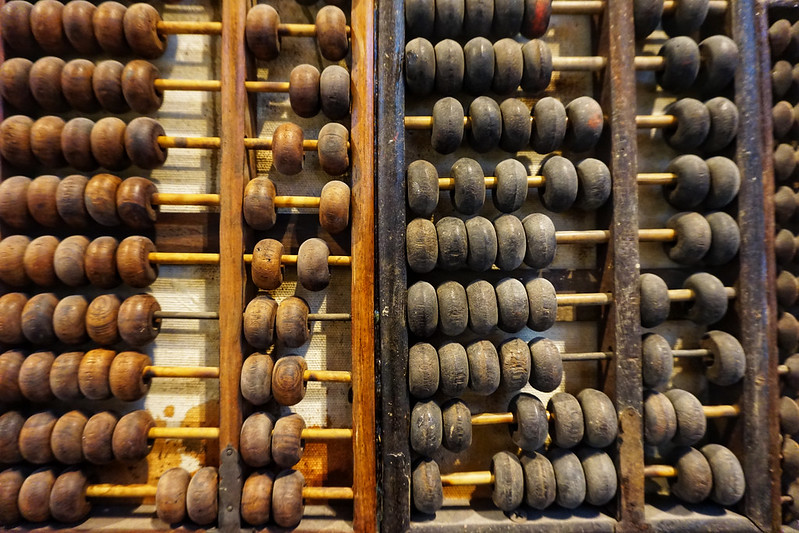
The Abacus, Unplugged
Someone asked for more info about how an abacus ticks. I’m on it.The thing about an abacus is that unlike many tools, it’s *always* unplugged!
Wikipedia tells us that an abacus (counting frame) is a calculating tool–in these times, a bamboo frame with beads sliding on wires. In times past, beans, stones, or metals were used. The abacus is still widely used by merchants, traders, and clerks. Many abaci are beautifully crafted and wonderful to look at and touch. They are also easily reversible for lefties–just flip it over.
The abacus is not just for adding, subtracting, multiplying, and dividing. You can use it for square and cube roots, logarithms, linear equations, vector norms, and more.
These countries used/use abaci–
Mesopotamia, Egypt, Persia, Iran, Greece, Rome, China, India, Japan, Korea, Native America, and Russia. In Japan, the abacus is called a soroban (算盤, そろばん, counting tray), and was imported from China around 1600.
Why use an abacus?
The abacus is highly prized in areas of the world that don’t have steady electricity. Many, many people can compute on it faster than you could use a calculator. It’s also a fine tool for the visually impaired. As an arithmetic teaching tool, it has been of immense value. In fact, Forbes.com—20 most important tools ranks the abacus as the second most important tool of all time. (The first is the knife.)
The wikipedia entry has a few tutorial links, and I’m sure the web in general has a lot of them. The one I liked best is from Totton Heffelfinger and Gary Flom—Abacus: Mystery of the Bead.


